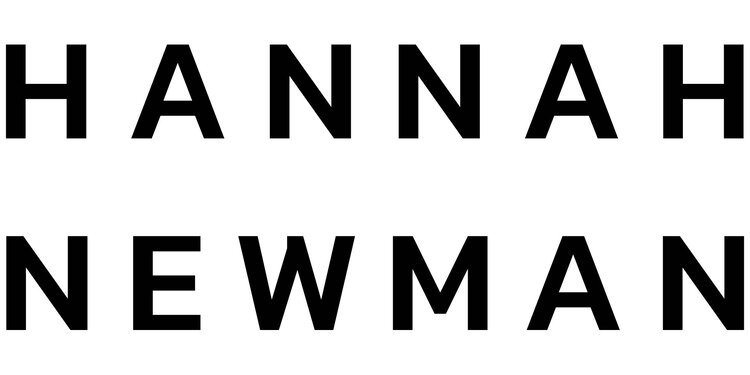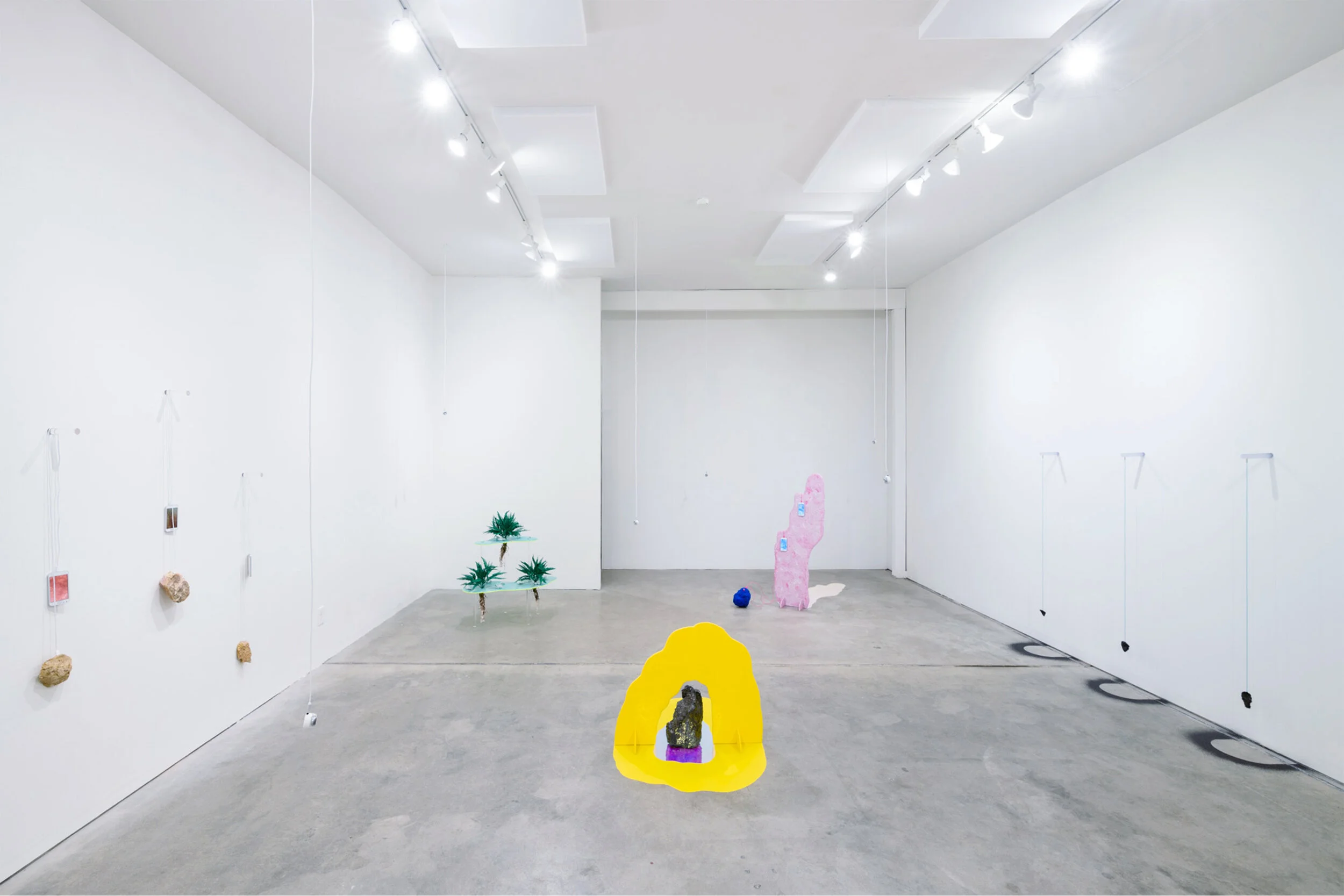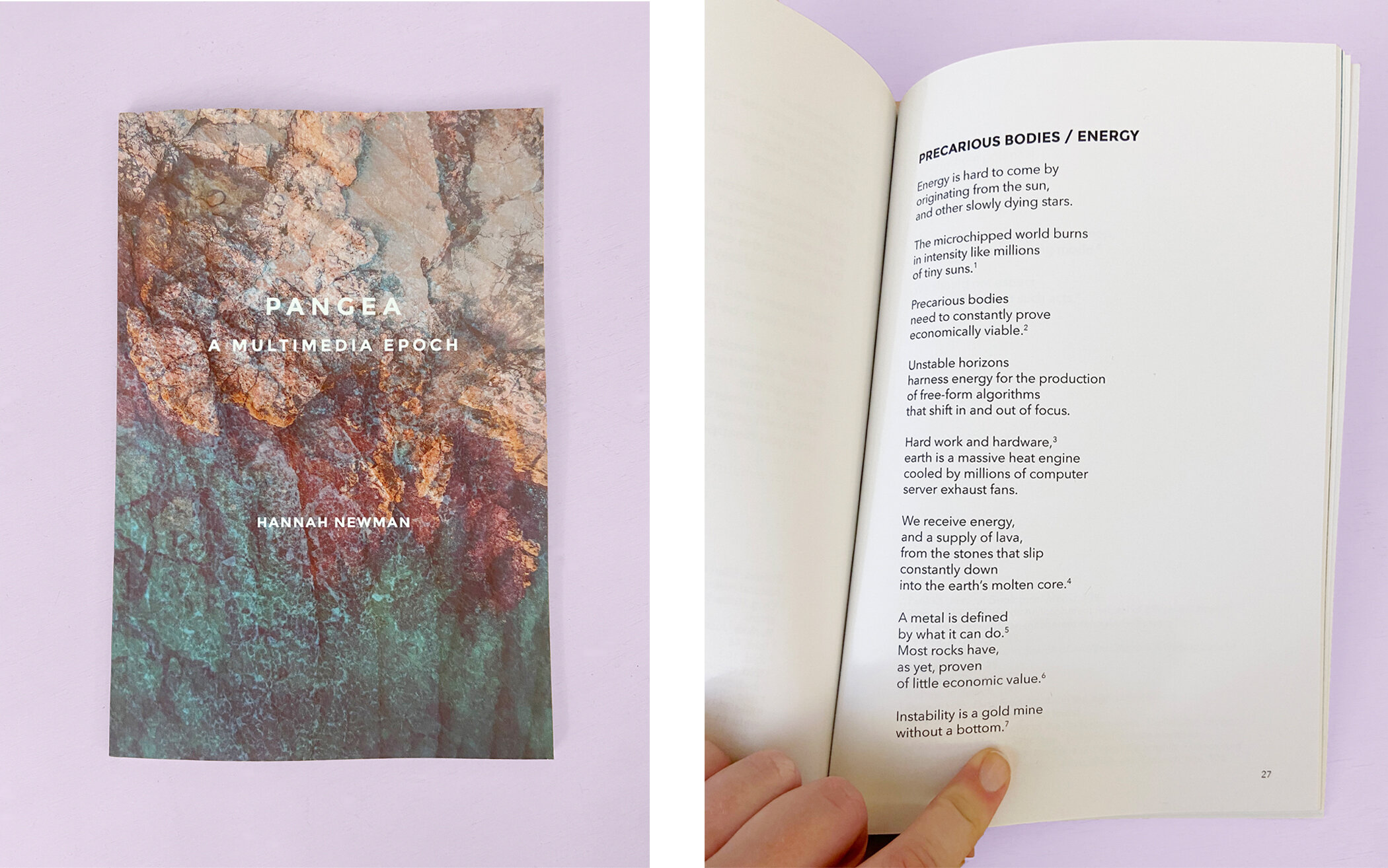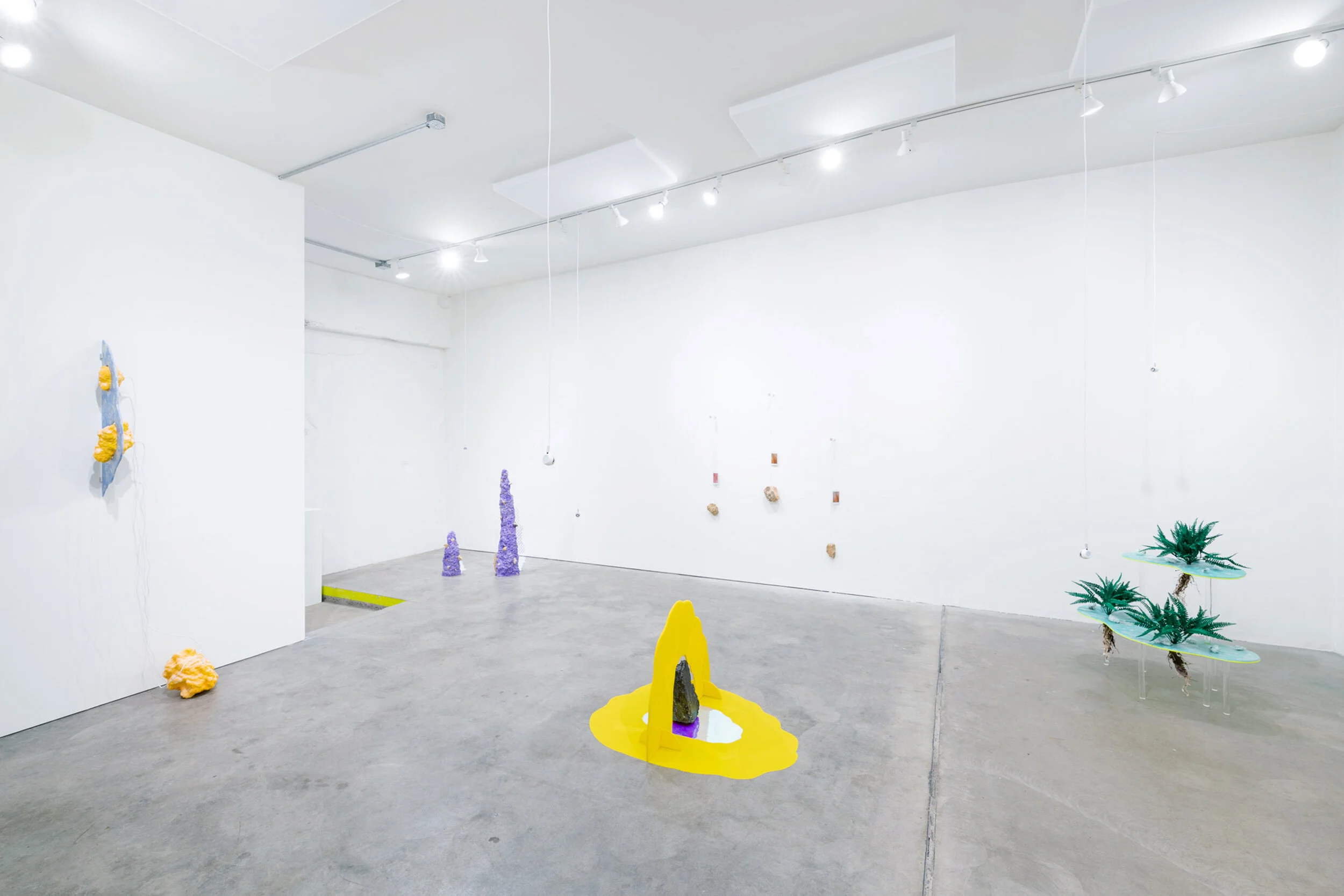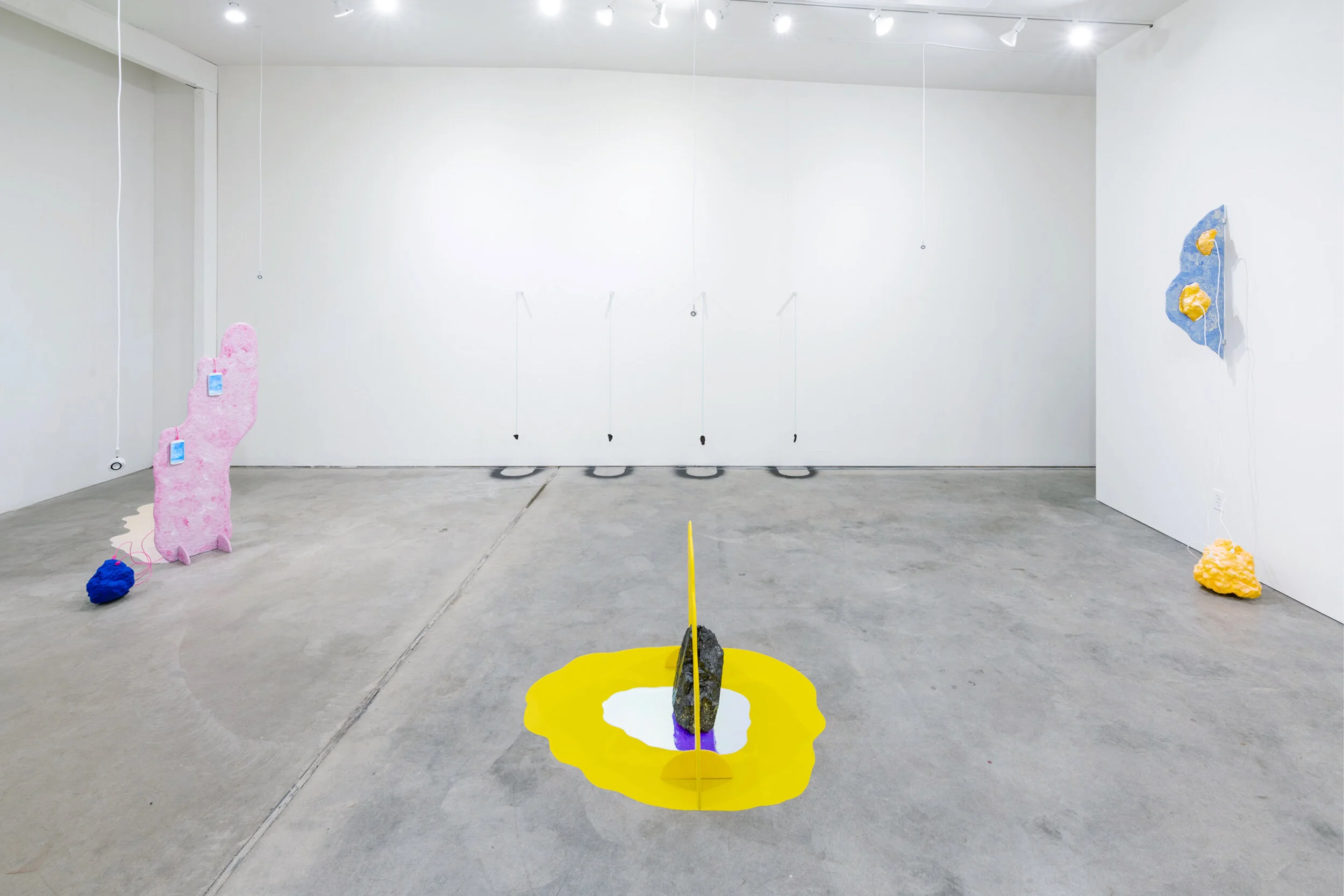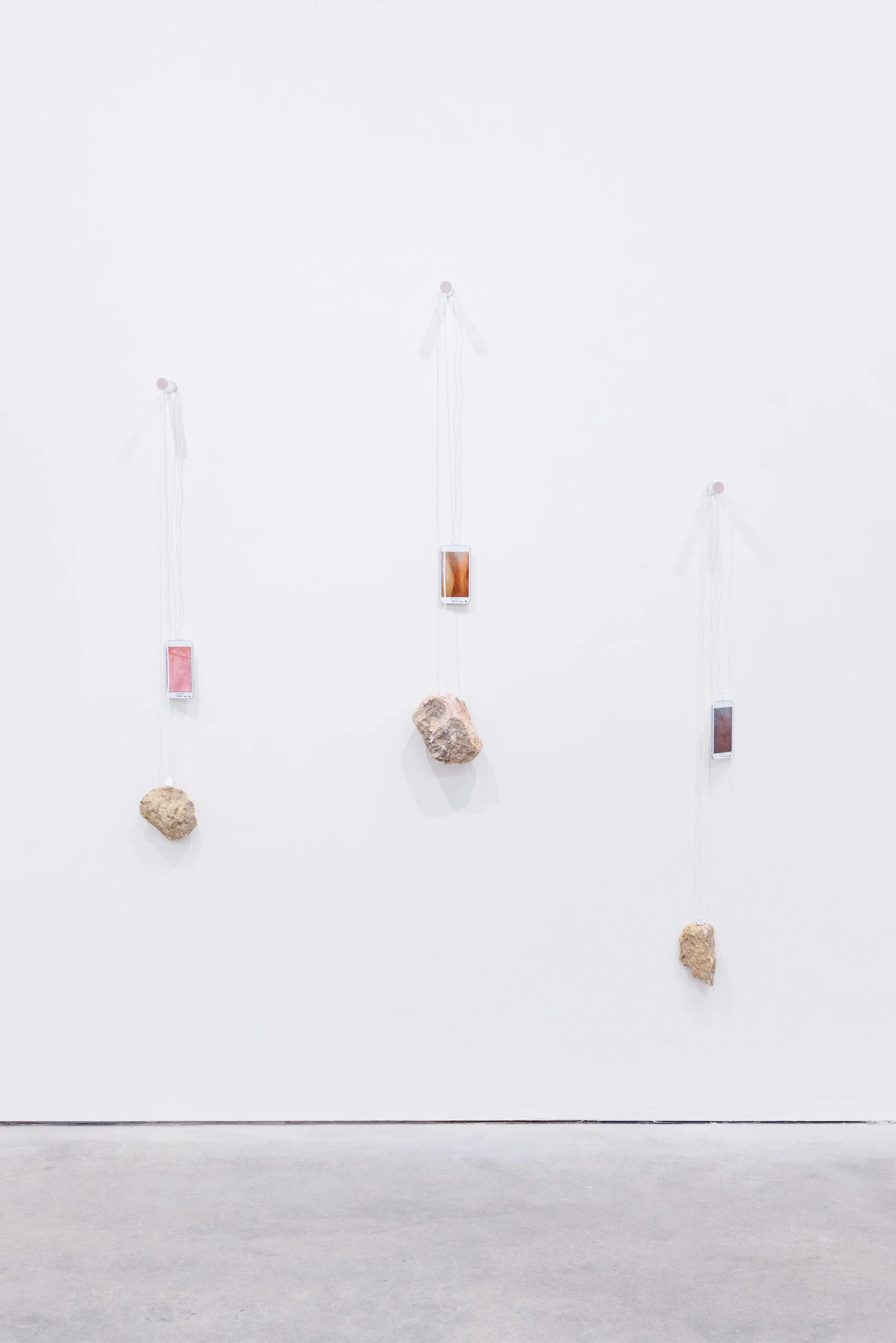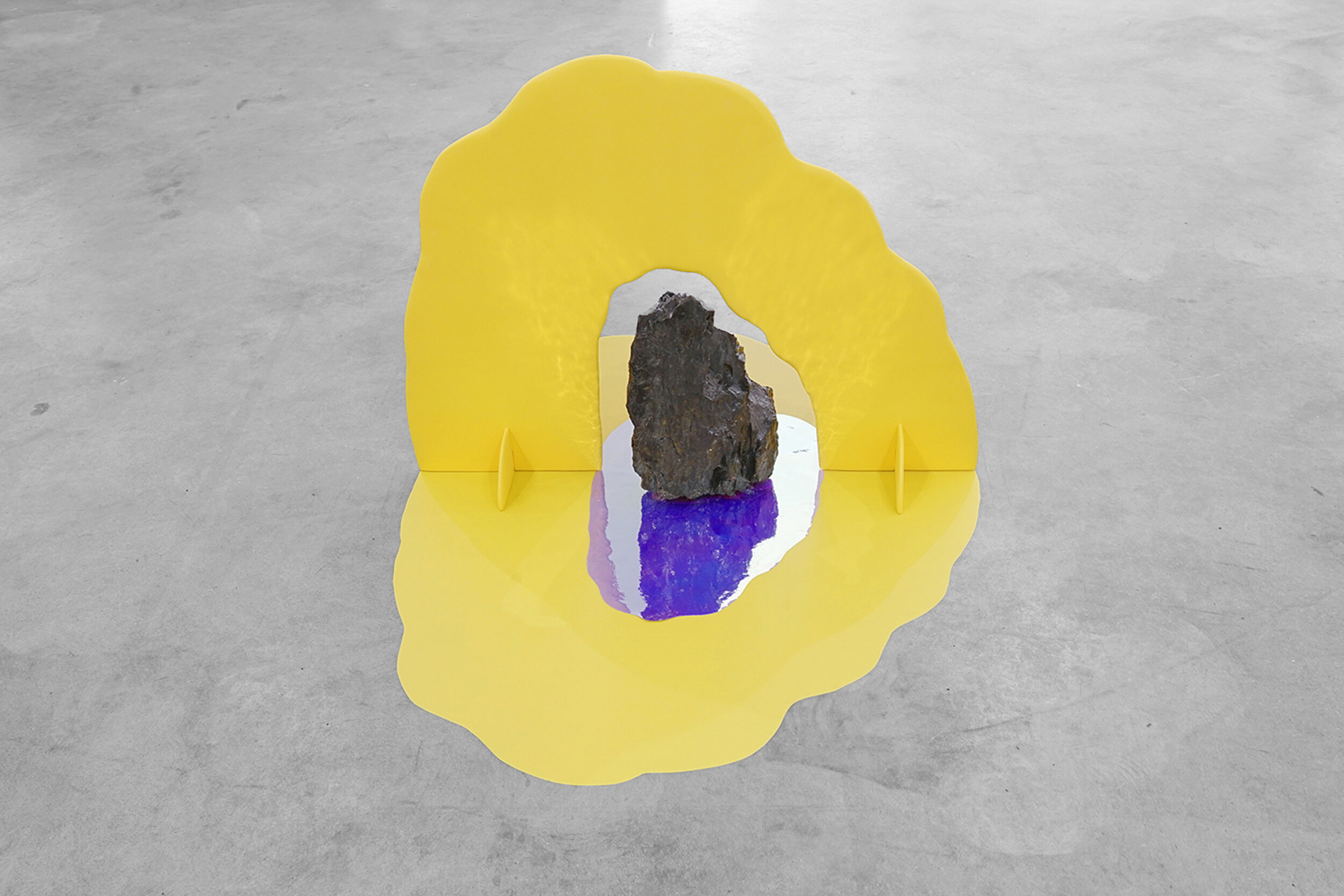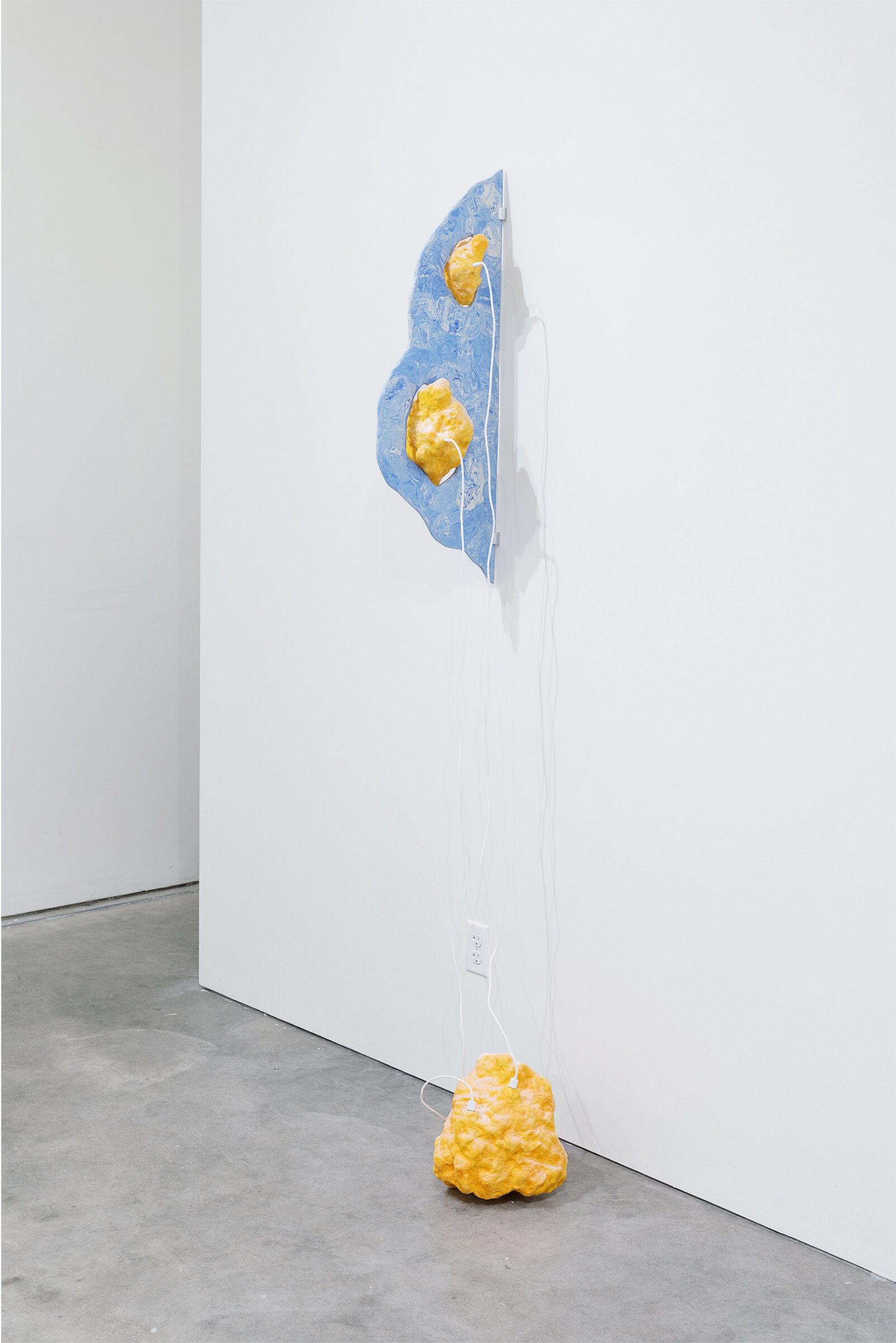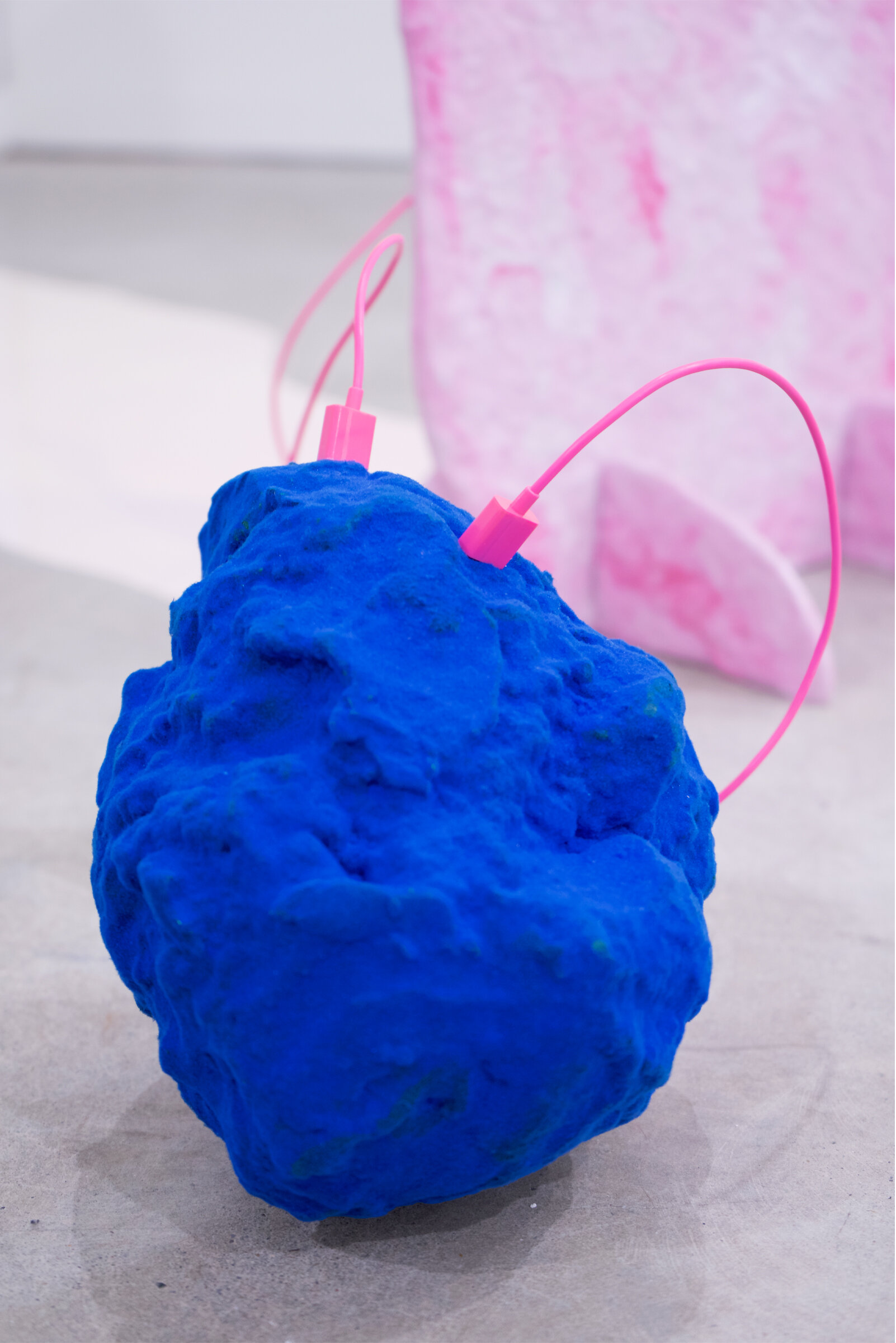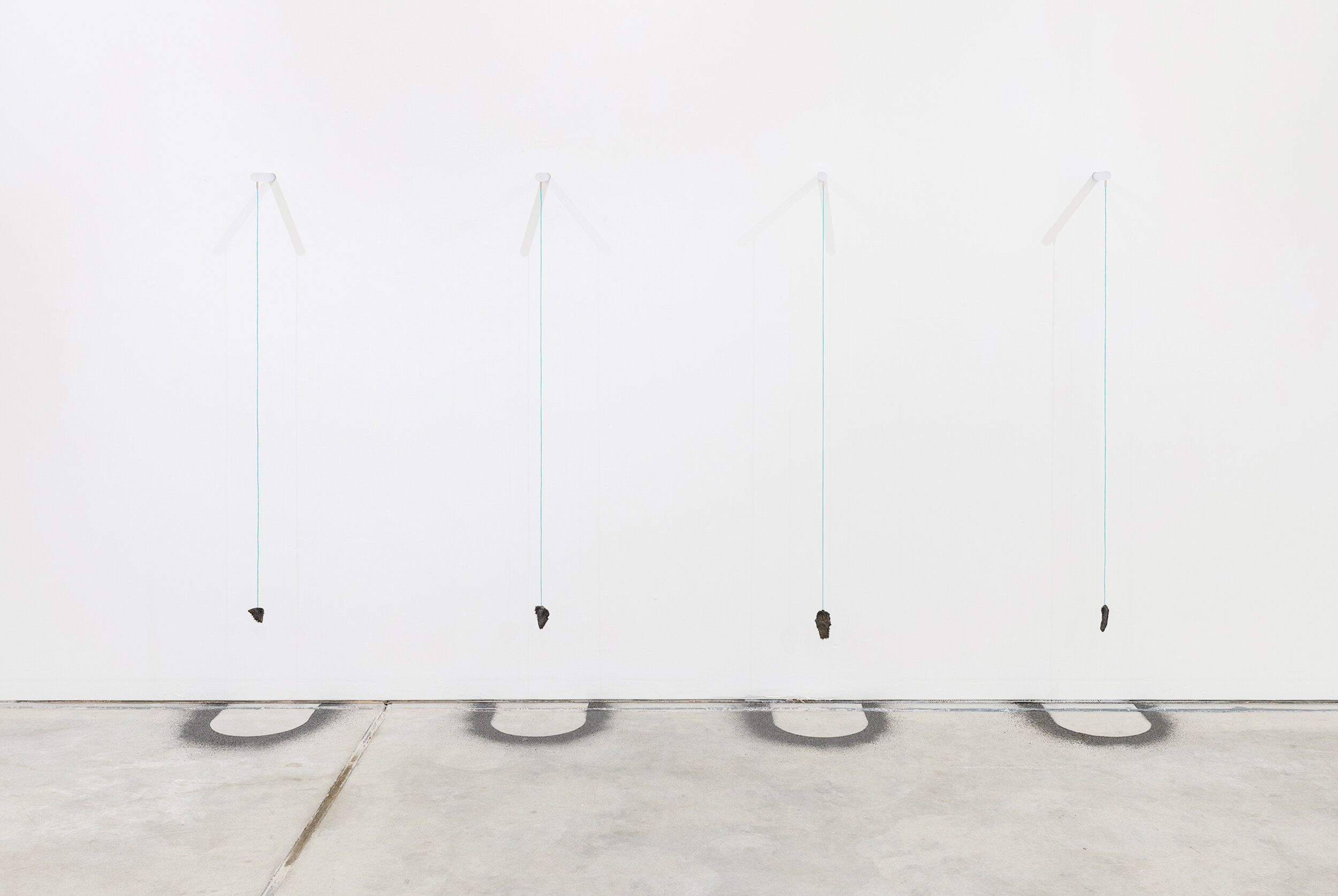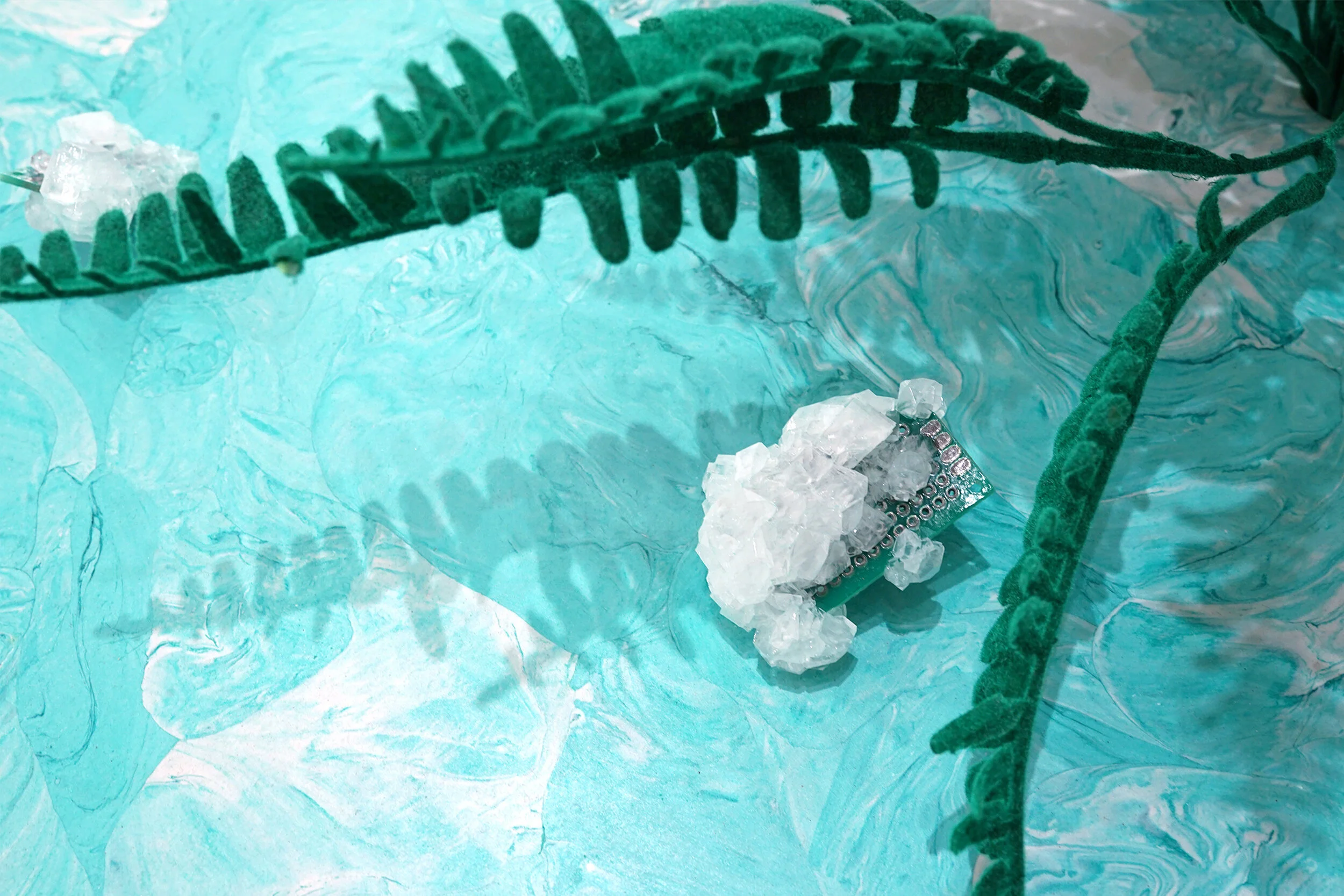PANGEA
Pangea releases a stream of potential energy from language and inanimate objects, sending resources and bodies into intersecting orbits. Rocks, minerals, research, digital technology, sound, and sculpture are mined for their poetic possibilities to create new supercontinents–clumps of information and materials that stick together. Consciousness moves between and within shared bodies to reimagine community and kinship on a planet where geologic time moves slow, but surface time moves fast. New, craggy landscapes emerge, powered by the hum of soft bodies and hardware.
In January 2021, I had the first opportunity to exhibit this body of work at Carnation Contemporary in Portland, OR. Each sculptural work was presented in tandem with a poem written from research compiled over the last two years. Acting as both a stand-alone poetry collection and a companion document to the sculptural work, Pangea: A Multimedia Epoch incorporated information, scientific data, fiction, internet articles and more to explore the movement of bodies and materials in a globalized world. The poetry radiated through the space via audio recordings and printed matter.
As part of the exhibition, I collaborated with movement artist Leah Wilmoth to create a livestreamed dance performance. Through choreographed and spontaneous movement, Wilmoth reinterpreted the sculpture and poetry of Pangea through dance, producing gestures that circulated through the gallery and virtual space.
Pangea embraces an interdisciplinary approach to making, utilizing sound, sculpture, clay, poetry, rocks, movement, digital technologies, and research as alternative frameworks and tools to explore the interconnected forces and economies between bodies.
PANGEA / HARD ROCKS
Our bodies are Pangea
bearing the traces
of our united past.
Fault lines appear
in the creases of our limbs
recalling our collective before. 1
Contiguous landmasses disperse, 2
bodies estranges
by the slow grind of continents.
These immigrant landscapes 4
intermingle and collide
in ever-newer constellations.
Bodies of rock shift,
separating, rotating, reconnecting– 5
an enmeshing and entangling of laboring bodies.
The surface of the earth expands
with uplift and eruptions, 6
as vectors and images
flow and solidify
to form new ground.
Viral bodies accumulate
mass and weight, filling
the spaces between grains
of sand and other sediment. 7
Brittle rocks and bodies
cannot stretch gracefully,
instead they fracture. 8
An island is any body
of land surrounded
by sea at mean high tide. 9
Sentilles, Sarah, Draw Your Weapons, page not found.
Bishop, Ellen Morris, In Search of Ancient Oregon: A Geological and Natural History, 37.
Roose, Jana, “Map of Pangea Reveals Which Countries Were Neighbors 300 Million Years Ago,” https://bigthink.com/news/pangea-politico-map-reveals-modern-countries-on-the-ancient-supercontinent.
Bishop, In Search, 15.
Ibid.
Ibid, 183.
King, Hobart M., “Sandstone,” https://geology.com/rocks/sandstone.shtml.
Bishop, In Search, 170.
Busch, Akiko, Patience: Taking Time in an Age of Acceleration, 52.
Image Credits: Mario Gallucci
